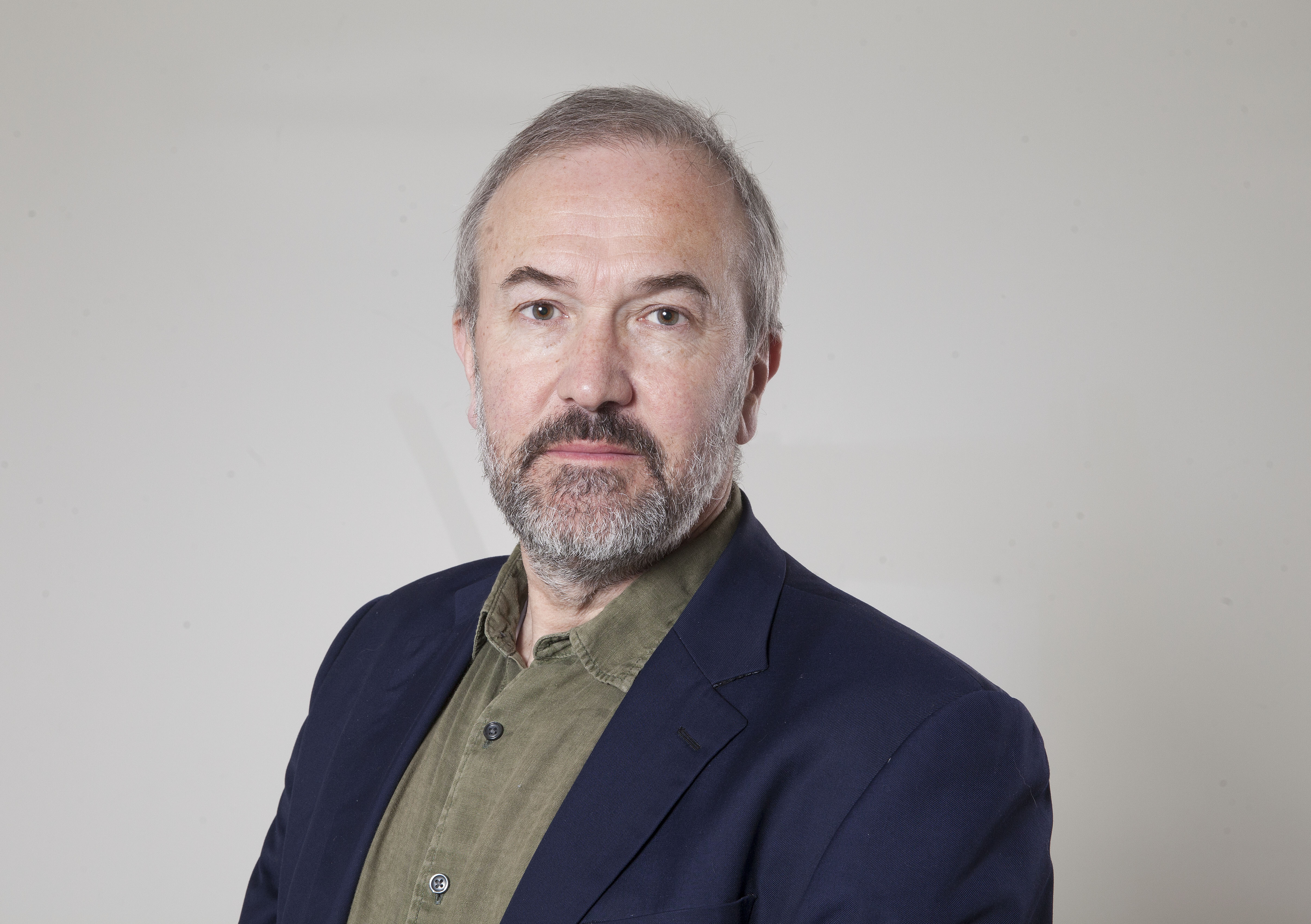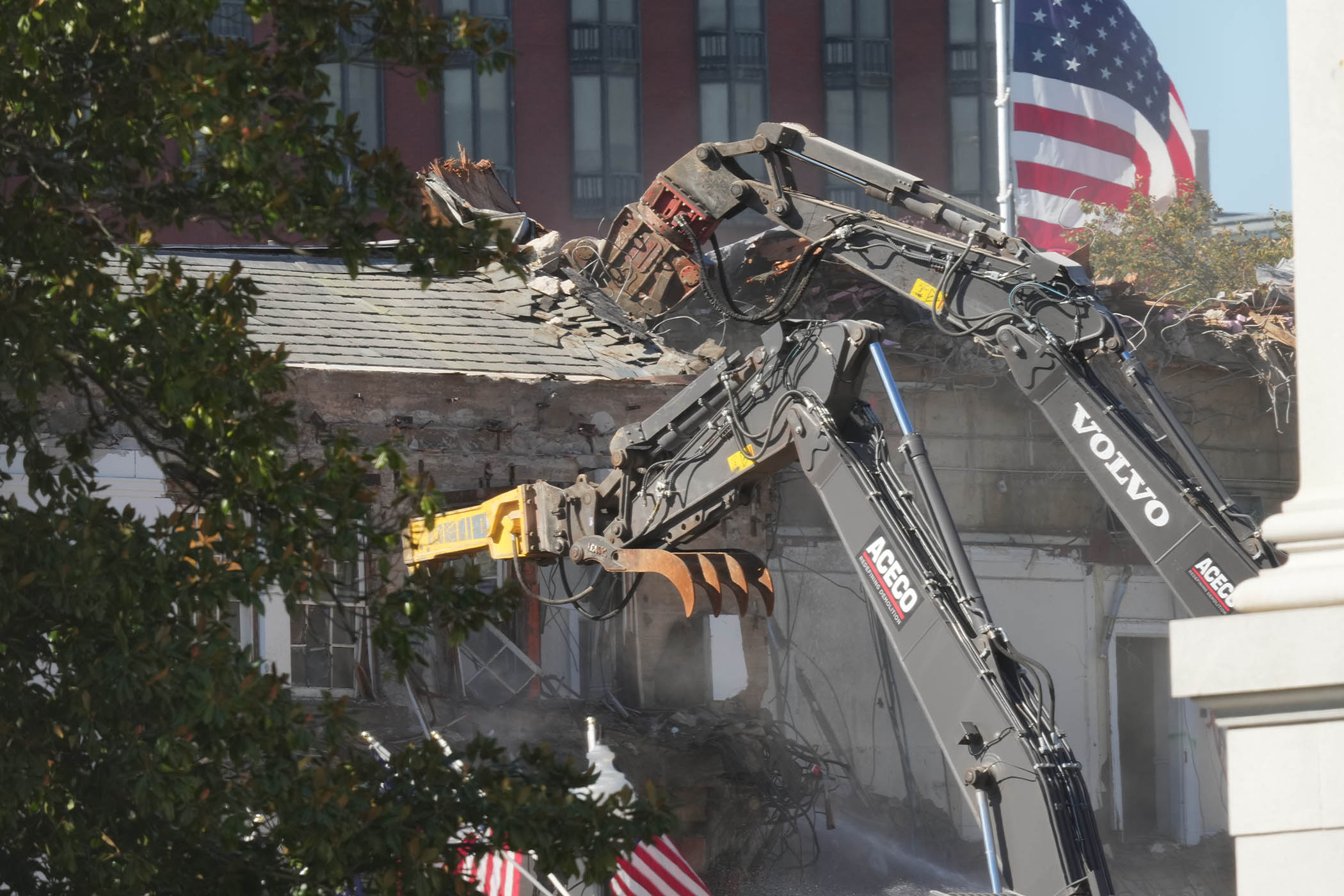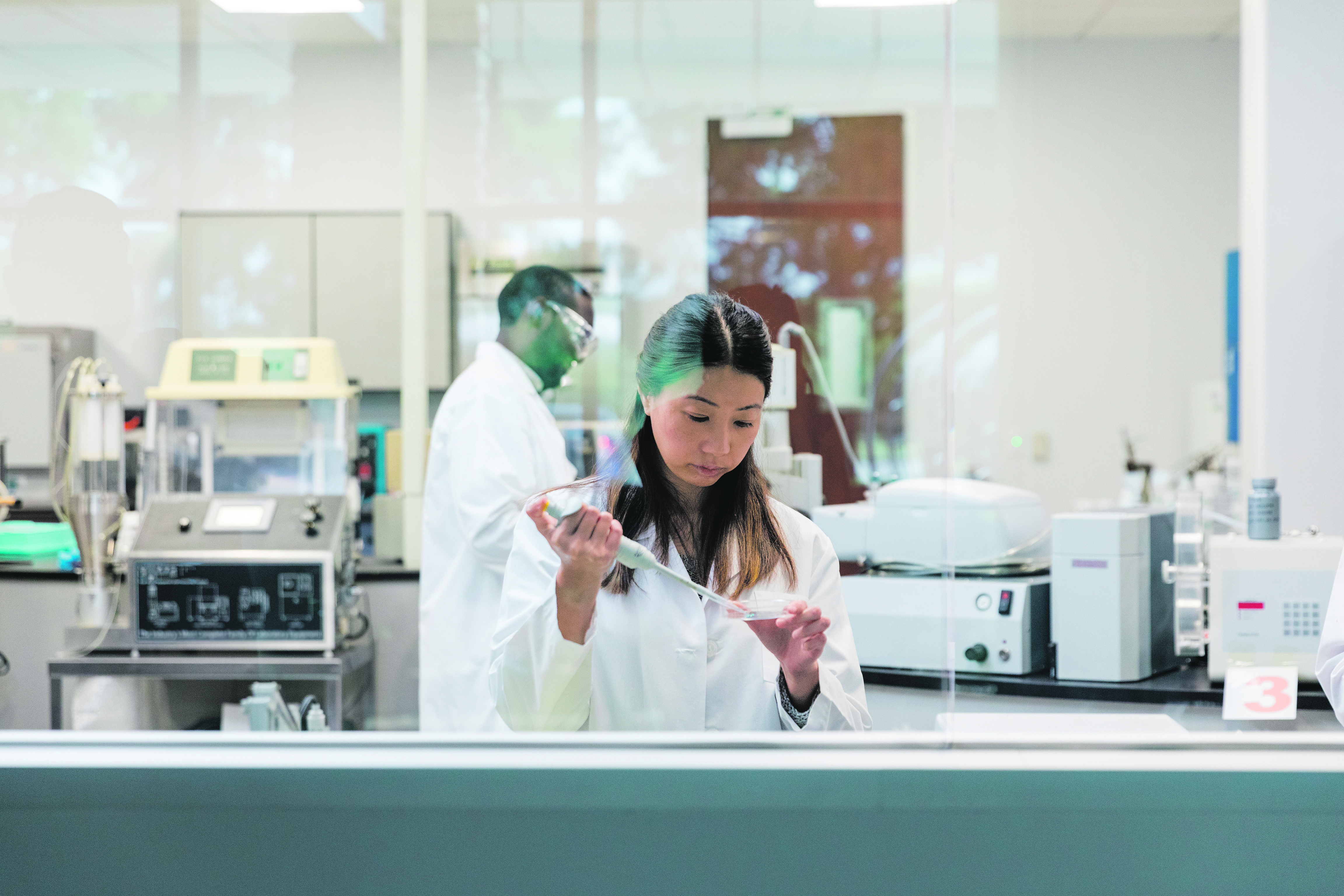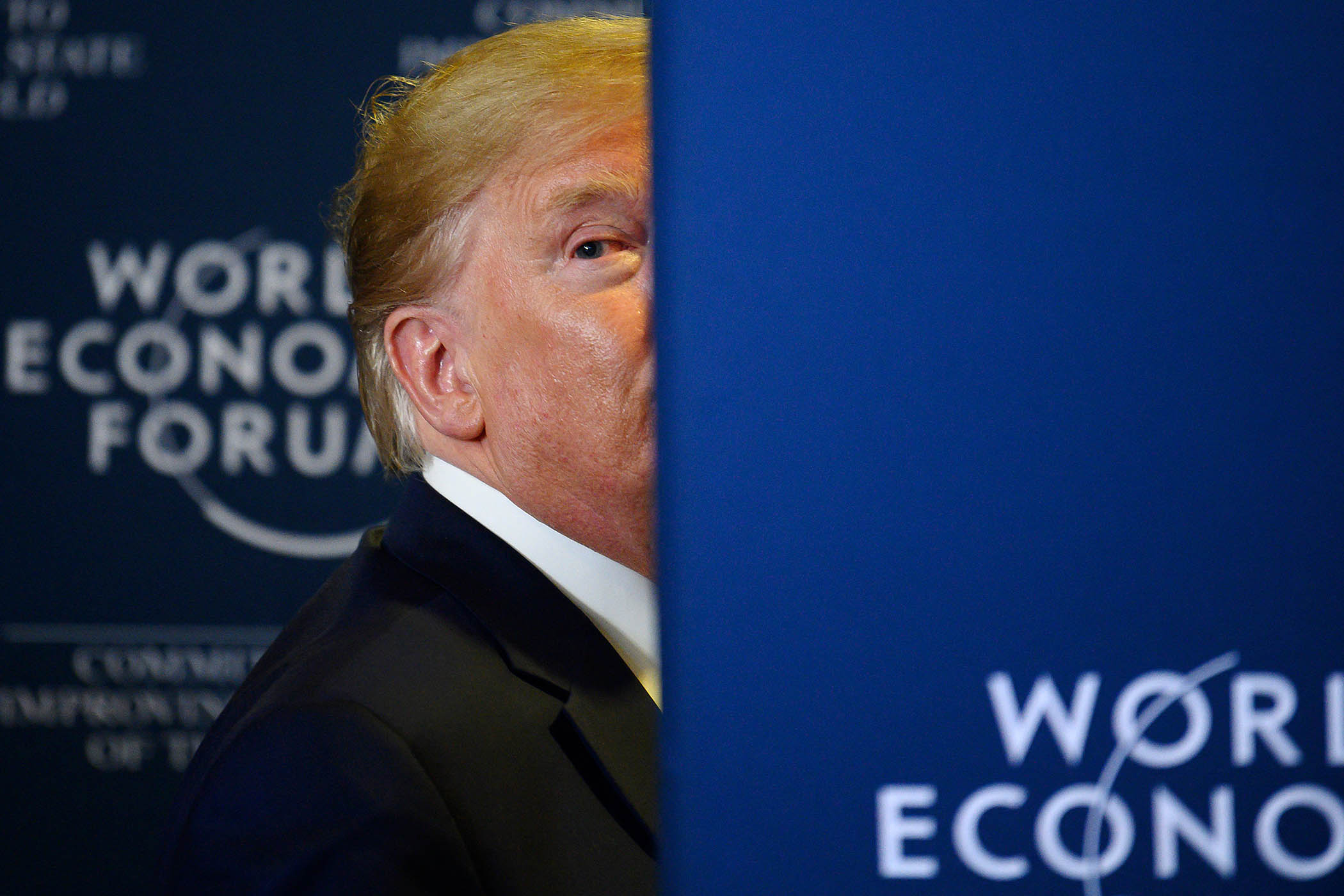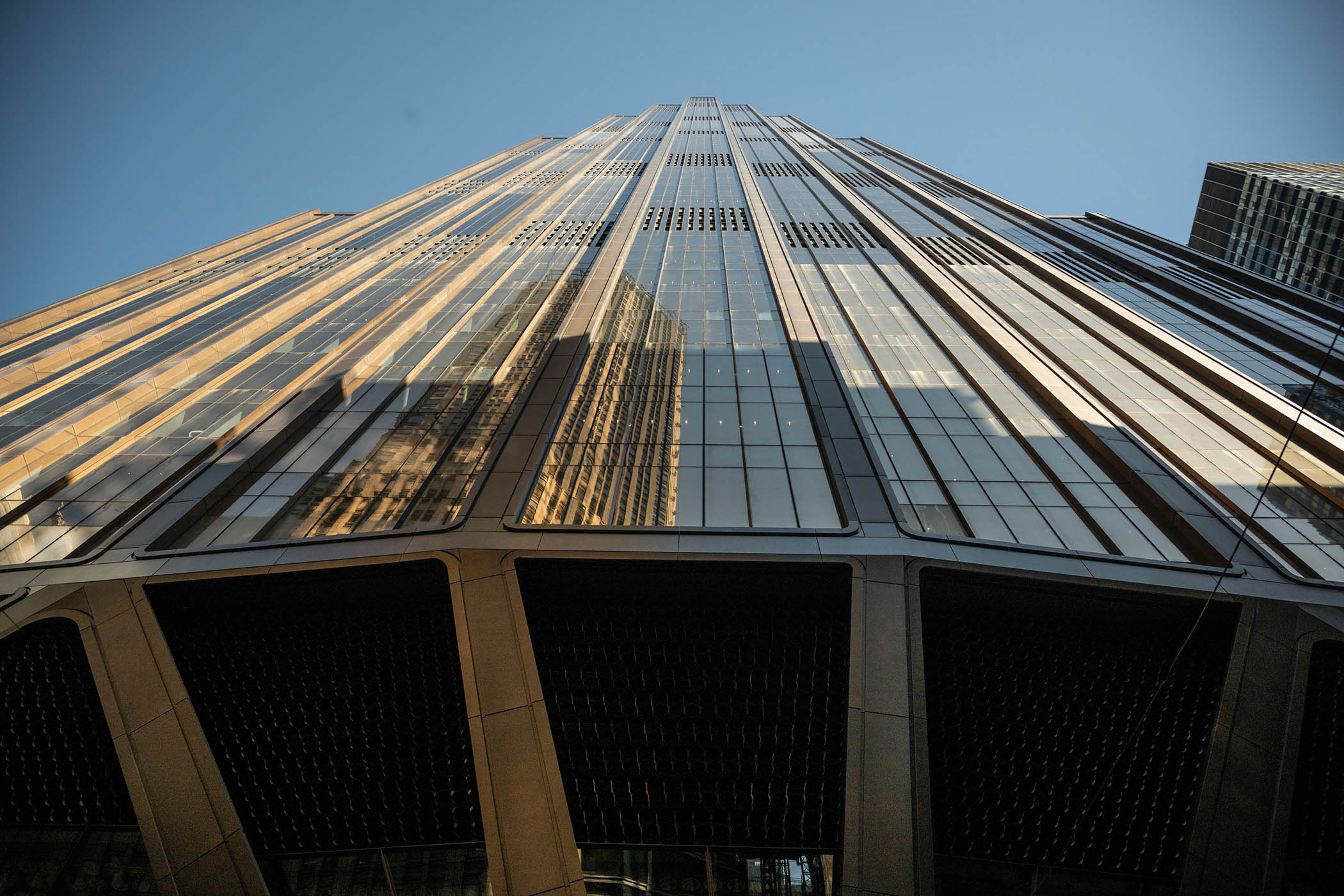
The bank’s New York HQ builds on a long history of benevolent tycoons providing their employees everything they need to stay put
Deep inside the cathedral-sized lobby of JP Morgan Chase’s new headquarters at 270 Park Avenue, New York, framed by steel struts and huge Gerhard Richter abstracts, the stars and stripes flutters from a bronze pole. This is what the Financial Times called a “fortress” and a “monument to American finance”, and what its British architects Foster + Partners call “a city within a city”, with a 19-restaurant food hall, cafes, pub, gym, medical office, yoga and meditation spaces, mothers’ rooms, outdoor terraces, high ceilings, circadian lighting – almost everything its employees might possibly want in a working day and evening. The breeze that moves the flag is artificial. This is a building that makes its own weather.
The tower is unquestionably magnificent. Its height of 1,388ft puts it in the company of the Empire State Building, whose volume it considerably exceeds. Its floor area of 2.5m sq ft is four or five Gherkins, about two Shards. Thanks to a deal on zoning rights involving nearby Grand Central station and St Bartholomew’s Church it gets much more on a block than would usually be allowed. Its construction required the removal of the 1960 Union Carbide building – to protests from conservationists and environmentalists – the tallest building in America ever to be voluntarily demolished.
It is the latest and one of the biggest iterations of a concept long loved by tycoons and corporations, of creating a universe that offers its employees almost everything they need, benevolent and controlling at once. Such projects appeal to the ego and vanity of their founders, who often delight in attaching their name to them. They come with the fantasy of moulding not just successful businesses but future human beings.
The idea that a happy worker is a productive worker goes back at least as far as Saltaire, the model village that the textile manufacturer Sir Titus Salt built from 1851 to 1871 in the shadow of his gigantic mill near Shipley, outside Bradford. Similar visions lay behind Port Sunlight on Merseyside, built with the Lever family’s soap fortune in the late 19th century, and the Cadbury family’s Bournville, outside Birmingham. As has been said of another chocolate utopia – Hershey, Pennsylvania – the aim was to make a perfect town, “where healthy, right-living, and well-paid workers lived in safe, happy homes”.
In all of them, workers were offered incomparably better conditions than they would find in overcrowded cities, with concert halls, libraries, gyms, bath houses, parks, churches and other facilities for the betterment of body and soul. You had, though, to conform to the boss’s concepts of good behaviour. These villages were seen as tools for improving the moral character of employees, for which reason they often had no pubs. And if you didn’t want to play by the company’s rules, you had nowhere much to go.
Related articles:
The scale and wealth of modern technology companies have seen the idea of the cornucopian corporate community make a comeback, in altered form. Apple Park in Cupertino, also designed by Lord Foster and his practice, is a charmed world of idyllic landscape and lavish facilities in which you may rarely make contact with anything not-Apple. It seems that Elon Musk is planning new cities at his sites of Starbase and Snailbrook in Texas, though there’s no visible sign yet of any utopian plans. The current scrappy development in these places is rather the opposite.
270 Park Avenue takes the Apple Park idea and realises it in the dense heart of Manhattan. There’s no particular reason to think that Jamie Dimon, chairman and chief executive of JP Morgan Chase, worries about the moral character of his employees in the ways that Salt or the Cadburys did. He does, though, want to keep them away from the great vice of working from home, about which he has been outspoken.
“I completely applaud your right not to want to go to the office every day,” he told Bloomberg, “but you’re not going to tell JP Morgan what to do.”
In-person work, he has also said, “greatly enhances mentoring, learning, brainstorming, and getting things done”. 270 Park Avenue is therefore a machine for drawing people into the office and keeping them there. In this respect it is the biggest, boldest example of a wave of projects that have tried, especially since Covid, to revive the office by nurturing the “wellness” of their workers. These include 22 Bishopsgate, the tallest building in the City of London, which provides a climbing wall and a retreat as well as several food and drink outlets.
Such places are often called “villages” by their developers or, in the case of 270 Park Avenue, “a city”. They’re neither, being too curated and managed to have the spontaneity and surprise of the real thing that lies beyond the glass walls of the block. Located as it is next to Grand Central, the new tower offers the possibility of rapid retreat to suburban homes in Connecticut and upstate New York, if desired, in those rare hours of escape from the gilded cage. In which case you have to wonder what is the benefit of being in the maelstrom of Manhattan at all, and not in the green fields in which model villages of the past were built.
Photograph by Victor J. Blue/Bloomberg via Getty Images
